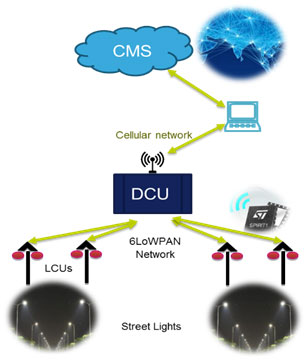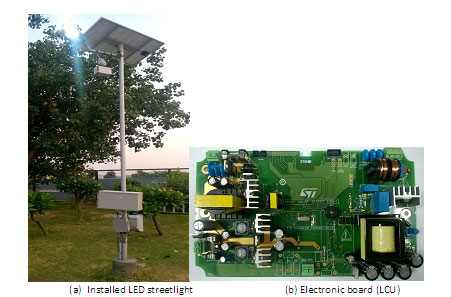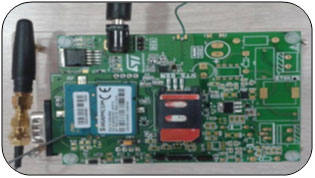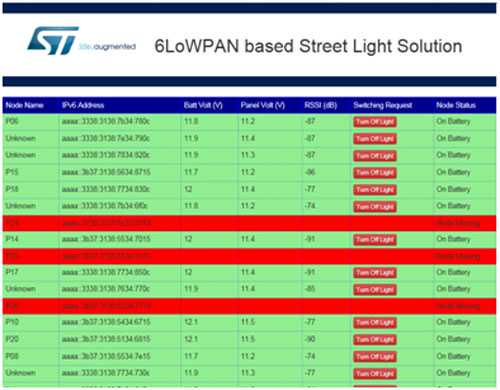By Aman Jha, Jitendra Jain, Prashant Pandey, Indar Prakash Singhal, Kamaldeep Bansal, Systems Central Lab, STMicroelectronics Pvt. Ltd., India
Authors designed Smart Solar Hybrid LED Streetlight System with AC-DC LED driver as a back-up power supply in case of unavailability of battery.
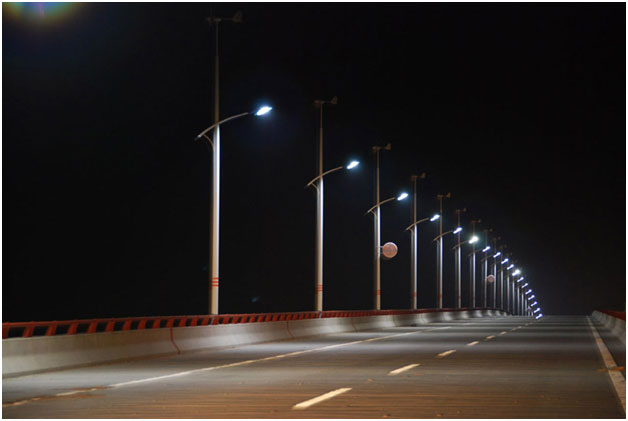 This system solution presents smart solar hybrid light emitting diode (LED) streetlight system. This system is developed as a pilot project in STMicroelectronics campus at parking as a LED streetlight. It is a kind of solar standalone system with AC-DC LED driver as a back-up power supply in case of unavailability of battery. In absence of battery or low charge condition of the battery it automatically switches to constant current AC-DC LED driver. The AC-DC LED driver is working on quasi-resonant mode (QR) based power factor correction (PFC) using single stage single switch with primary sensing proprietary control. The commercial LED driver, HVLED001A is used for driving the LED. The energy storage element, battery is used as a main power supply input for LED driver. The battery is charged using maximum power point tracking (MPPT) scheme during daytime. The MPPT scheme is known as an efficient scheme for charging the battery using solar radiation in available literature. The measured efficiency of MPPT stage power converter, is more than 97%. The proposed DC LED driver is a 2-phase boost DC-DC converter. The 2-phase DC-DC converter helps to reduce size of dc bulk capacitor, which is recommended at load side for filtering purpose. Based on literature it is a weaker link for power converter to fail in terms of ageing. Finally it enhances the life of LED driver system. Efficiency of DC-DC LED driver stage is also more than 95%. These higher efficiency of power conversion is possible by the use of efficient MOSFETs and gate driver ICs. The LED driver is working in constant current which is another parameter to enhance life of LED. On-board measurement and decision has been performed by highly efficient digital power conversion microcontroller (STM32F3). The streetlights are connected to each other by a 6LoWPAN mesh network implemented using commercially available Sub-GHz device called SPIRIT1. Street Light nodes talks to each other over 6LoWPAN mesh technology over free industrial, scientific and medical (ISM) radio band (868 MHz).The lights nodes with solar panel are termed as light nodes that talks to the data concentrator unit on 6LoWPAN mesh technology (mesh). Light conditioning unit (LCU) is powered both by mains and solar panels. There is a provision of auto switch ON/OFF/Dimming of the lights by sensing the ambient light and movement. The system comes with rudimentary command and control center that allows the end user to control the individual light nodes or a group of light nodes from any place. Figure 1 shows the smart solar hybrid light management system. Figure 2 shows the installed light at parking with STMicroelectronics developed electronic board. The data concentrator unit (DCU)comes with on-board global system for mobile communications(GSM) module to communicate with cloud application using general packet radio Service/third generation/fourth generation(GPRS/3G/4G)mobile network technology. Figure 3 shows the DCU with inter-LCU distance. User can control individual light nodes or can broadcast command to all the light nodes. There is provision of scheduling of switch ON/OFF/Dimming of light nodes based on astronomical clock. The cloud platform is tested on the Microsoft Azure and the data analytics is performed on the data received by the DCU using the tools provided by Microsoft Azure. Figure 4 shows cloud web application. The prototype of this LED driver is experimentally verified, manufactured and deployed at STMicroelectronics campus using 30 number of existing poles in an area of 100×150 sq. meters. The conversion efficiency of each stages is more than 90% individually with good power quality and running reliably.
This system solution presents smart solar hybrid light emitting diode (LED) streetlight system. This system is developed as a pilot project in STMicroelectronics campus at parking as a LED streetlight. It is a kind of solar standalone system with AC-DC LED driver as a back-up power supply in case of unavailability of battery. In absence of battery or low charge condition of the battery it automatically switches to constant current AC-DC LED driver. The AC-DC LED driver is working on quasi-resonant mode (QR) based power factor correction (PFC) using single stage single switch with primary sensing proprietary control. The commercial LED driver, HVLED001A is used for driving the LED. The energy storage element, battery is used as a main power supply input for LED driver. The battery is charged using maximum power point tracking (MPPT) scheme during daytime. The MPPT scheme is known as an efficient scheme for charging the battery using solar radiation in available literature. The measured efficiency of MPPT stage power converter, is more than 97%. The proposed DC LED driver is a 2-phase boost DC-DC converter. The 2-phase DC-DC converter helps to reduce size of dc bulk capacitor, which is recommended at load side for filtering purpose. Based on literature it is a weaker link for power converter to fail in terms of ageing. Finally it enhances the life of LED driver system. Efficiency of DC-DC LED driver stage is also more than 95%. These higher efficiency of power conversion is possible by the use of efficient MOSFETs and gate driver ICs. The LED driver is working in constant current which is another parameter to enhance life of LED. On-board measurement and decision has been performed by highly efficient digital power conversion microcontroller (STM32F3). The streetlights are connected to each other by a 6LoWPAN mesh network implemented using commercially available Sub-GHz device called SPIRIT1. Street Light nodes talks to each other over 6LoWPAN mesh technology over free industrial, scientific and medical (ISM) radio band (868 MHz).The lights nodes with solar panel are termed as light nodes that talks to the data concentrator unit on 6LoWPAN mesh technology (mesh). Light conditioning unit (LCU) is powered both by mains and solar panels. There is a provision of auto switch ON/OFF/Dimming of the lights by sensing the ambient light and movement. The system comes with rudimentary command and control center that allows the end user to control the individual light nodes or a group of light nodes from any place. Figure 1 shows the smart solar hybrid light management system. Figure 2 shows the installed light at parking with STMicroelectronics developed electronic board. The data concentrator unit (DCU)comes with on-board global system for mobile communications(GSM) module to communicate with cloud application using general packet radio Service/third generation/fourth generation(GPRS/3G/4G)mobile network technology. Figure 3 shows the DCU with inter-LCU distance. User can control individual light nodes or can broadcast command to all the light nodes. There is provision of scheduling of switch ON/OFF/Dimming of light nodes based on astronomical clock. The cloud platform is tested on the Microsoft Azure and the data analytics is performed on the data received by the DCU using the tools provided by Microsoft Azure. Figure 4 shows cloud web application. The prototype of this LED driver is experimentally verified, manufactured and deployed at STMicroelectronics campus using 30 number of existing poles in an area of 100×150 sq. meters. The conversion efficiency of each stages is more than 90% individually with good power quality and running reliably.
